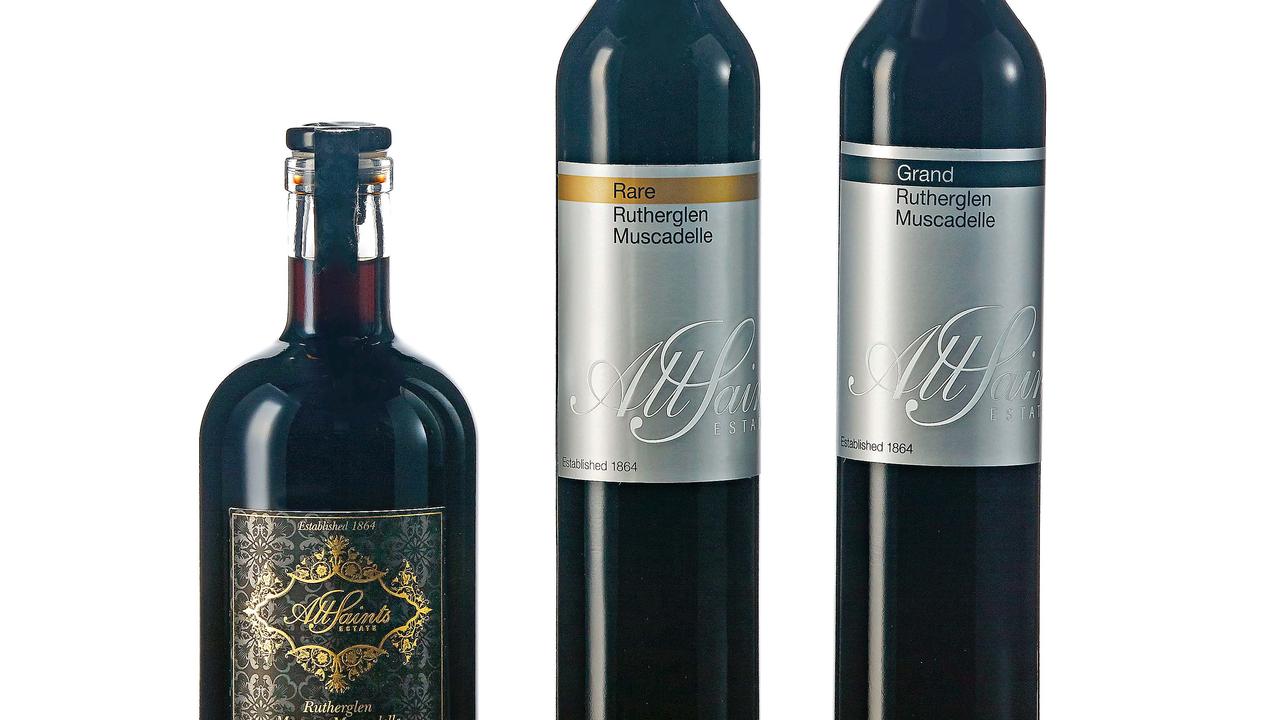Cast away
KANGAROO Islanders are reeling over plans to ban them from fishing in their own patch of paradise.
ANDY Gilfillan, second-generation sheep farmer, fisherman and long-suffering drummer in one of Kangaroo Island's two working blues-rock bands, still considers himself a relative newcomer to island life.
He may own South Australia’s oldest house, situated on the island, but he says he is not so presumptuous as to dismiss the cultural knowledge of his fifth- or sixth-generation island neighbours.
Gilfillan is being modest, of course. His assimilation is complete, confirmed by the missing finger on his right hand, an affliction common to many island men. Gilfillan says the finger was severed while poking around a piece of machinery on a school excursion. His father asked the island nun to sew it back on – without anaesthetic or success – in the mistaken belief that it could be reinserted like his sister’s lost tooth might have been if he had acted more quickly.
Gilfillan’s neighbour, winemaker Jeff Howard, also bears the scar that some people unkindly dismiss as the curse of the clumsy farmer, as does Doug Willson, the thrice-married octogenarian descendent of one of the island’s original settler families, who remains stoically unbowed by life’s blows, including cancer and emphysema.
But Gilfillan, Howard and Willson have more in common than missing fingers. They all feel threatened by the same enemy: an attack by mainland bureaucrats on the most cherished of island traditions – the right to fish. And the forces ranged against Kangaroo Island’s not-so-silent majority appear not to share Gilfillan’s respect for the long-held traditions of local life.
Located 110km southwest of Adelaide, Kangaroo Island covers 4350 square kilometres and has a population of 4400 people. Tourism dominates the island economy, but it has now become the frontline of SA’s plans to establish a series of exclusion zones within a system of marine parks to preserve for posterity examples of pristine marine environments. Under what is known as a representative sample model, planners are charged with securing an outstanding area of each type of marine habitat, such as sea-grass beds, reef formations and deep-sea troughs. The zones include areas where the terrestrial and marine environments merge. And, in a sign of the times, the state sanctuary zones will eventually tie into a system of marine reserves in Commonwealth waters as part of a bioregional mapping process before federal environment minister Tony Burke.
Allan Holmes, chief executive of SA’s Department of Environment and Natural Resources, says sanctuary zones could take up about 10 per cent of the states’ waters, leaving 90 per cent available for fishing. But local MP Michael Pengilly has accused Holmes’ department of indulging in “voodoo politics”. He says, on Holmes’ analysis, 26 per cent of the vast areas designated as marine parks will have to be included as sanctuary or no-take zones to meet the 10 per cent target. “It is going to kill the regional areas,” he says.
Gilfillan is the chair of Kangaroo Island’s Local Advisory Group, which in theory acts as a conduit for residents to negotiate with the mainland authorities, but he spoke to The Weekend Australian Magazine as a private citizen. As a high-profile opponent of the planning process, Gilfillan now believes his appointment to the group was a cynical ploy to curb his public opposition. “I told everyone to just go along with the process and everything would be all right,” he says. “But I now think that was wrong.”
It is the way the process has been conducted that has upset most island residents, particularly the way in which they were encouraged to identify their favourite fishing spots under a controversial computer process known as SAMPIT (South Australian Marine Parks Information Tool). Locals thought they were identifying their favourite fishing spots so they could be left out of the preservation zones, but when the exclusion zone boundaries were released they focused instead on the areas in which locals liked to fish. A strip of water out the front of the island’s most expensive homes has been left open to fishing, but this has not been welcomed by owners who fear their waterfront area will become a honeypot for frustrated anglers and charter operators. They have set up a fighting fund to add fuel to a dispute that is now sweeping SA politics.
On Kangaroo Island, as elsewhere, there is a lot of support for marine parks to protect areas of great significance and outstanding beauty. If, as marine scientists claim, sanctuary zones lead to improved fish stocks spilling over into surrounding areas, so much the better. But authorities appear to have miscalculated with their ambit claim to lock up large tracts of the island’s waters. Commercial fishermen fear they are being squeezed out in a death-of-a-thousand-cuts strategy to limit the state’s compensation bill. “They are trying to break us, I think,” says lobster fisherman and sheep farmer Ron Bott. “They are trying to make us not viable so they don’t have to buy us out. All our expenses and licence fees go up, even though we can now only fish half the time. If they do what they say they are going to do, I am buggered again.”
Recreational fishermen, meanwhile, are outraged that their favourite spots will soon be off limits. Island mayor Jayne Bates says one grandfather told her how he took his grandchildren to throw a line off the beach but would not be able to do that anymore. “He considers it his heritage – his grandfather did it, his father did it, he did it, his children did it and his grandchildren are doing it. This has been part of their existence forever, and now it is being shut off.”
Bates – who married into another of the island’s original families – is most concerned about the knock-on effect that fishing bans will have on an already struggling island economy. “The thing you have got to get your head around is this is a closed community and a closed economy. It’s not like the people who work in the fish and chip shop can get a job elsewhere. They would probably have to leave the island, so, because we are a closed economy, the risk for us is multiplied.”
“Wallaby” Bob Campbell – who runs night floodlight net and spear fishing tours along the beach shallows – is a well-known island character. He believes a ban on fishing would put “another nail in some people’s financial coffins”.
“We have a resource that has been looked after fairly well and we are going to lose that resource,” he says. “We don’t have a lot of services because the council is struggling financially. Per capita income is very low, and cutting the fish resource is going to have a profound effect on some people, because at the moment they can always go down and get a feed of fish.”
Tour and dive boat operators are wary that more regulation will inevitably lead to increased fees to fund an ever-growing bureaucracy. Andrew Neighbour runs swim-with-dolphin tours through Kangaroo Island Marine Adventures. He cannot understand why soon you may still be allowed to collect 520-million-year-old trilobite fossils from the island cliffs but won’t be permitted to throw a fishing line in the water off a local beach.
For Gilfillan, the whole process is symptomatic of the lack of respect shown by mainland institutions and a new breed of island residents who refuse to let go of their city hang-ups. “There is a lot of resentment about people who have come to the island over the last couple of years. They have obviously been unhappy wherever they have been, and when they get to the island they are still angry and upset,” he says. “You think, why did you come here if you have such a bitch about what farmers are doing, and what fishermen are doing, and how we are buggering everything up?”
The dispute over marine sanctuary zones has inflamed lingering bad memories of how mainland authorities refused to listen to advice from locals that introduced koalas had become a feral menace; $3 million dollars a year is now being spent sterilising the animals in what many locals regard as an extravagant waste. Tempers still flare at the way National Parks recently took over the community’s favourite recreation area, pulled down an access bridge and BBQ, and told locals they would have to pay to use the area in future.
And talk about fire-fighting is guaranteed to get the island blood racing. “A fire three years ago started as a little whirly fire way out in the middle of the scrub,” says Howard. “Previously our fire chief would have taken four blokes, walked in the scrub and put it out, but they couldn’t do that. They had to get their orders from above, by which time the wind had changed and it burnt out half the district over four days.”
For Howard, the marine-park issue is being driven by people with a similar lack of real-world experience. “These greenies that are jumping up and down making all the fuss about sanctuaries have only been here 10 years, some of them, or less,” he says. “They have said, ‘Wow, this is paradise on Earth, we’ll have a bit of this.’ So they buy their little block and then close the gate. They say, ‘Now we have got everything we want, we don’t want anybody else here.’ But the reason Kangaroo Island is such a fantastic natural place is because generations of farmers and local people have kept it that way.”
Mayor Bates agrees islanders have proved they are very good environmental custodians. “We would not have the island as it is now if they weren’t,” she says. “Where else in Australia can you find a region still with 47 per cent under native vegetation? Nowhere.”
But sanctuary zone supporter and former commercial fisherman Tony Geyer says the objections are overblown. “Exclusion is a bit of a hostile word,” he says. “People get the wrong impression. A sanctuary zone does not exclude people, it just prevents all forms of extraction – don’t take fish, don’t take sea grass or anything that is attached to that area. You can pass through a sanctuary zone with fishing gear on board providing you are not using it. You can swim, surf, photograph and dive.” Geyer says he believes he has a balanced view. “I want there to be sanctuary zones, but I want them to be of a size that is acceptable to the community but adequate to meet the demands of science. Science will tell you that if a sanctuary zone is not large enough, it is not worth having.”
Supporters of marine park exclusion zones say there is considerable scientific data to indicate the creation of exclusion zones within marine parks is an important tool in the long-term conservation and management of marine biological diversity and ecological processes. In theory, exclusion zones allow fish stocks to increase beyond the zone boundaries and build resilience for the entire marine environment. But not all scientists agree. Robert Kearney, emeritus professor of fisheries at the University of Canberra, says: “Athough there is a great deal of literature on marine parks, there remains a serious lack of in-depth evaluation of the efficacy of area management of fishing in areas where there is effective regulation of fishing by more traditional techniques.’’
Like many island residents, Doug Willson senses bureaucratic overkill. “I started putting a line over the jetty when I was five years old and I don’t reckon there is anything from an environment perspective that has been affected,” he says. “I don’t object to a marine park that has the support at a local level. I think people would protect it. They will police it if anyone drifts into those grounds. It’s the same as the bag limits for fishing.”
John Lavers, a local scuba-diving legend, also favours a community-driven plan. He has been a keen advocate of protecting pristine coral formations in the Backstairs Passage between Kangaroo Island and the mainland, where the waters of Investigator Strait, the Spencer Gulf and Southern Ocean meet to produce a rich marine diversity. “There are a number of significant reefs, but the marine park suggested for that area is massive, and that is what is causing the debate,” Lavers says. It smacks to him of empire-building by National Parks. “To run a charter boat you have to have a licence to carry passengers, a licence to fish and now a licence to enter a marine park,” he says. “Then you have insurances and all the rest. Quite frankly, it isn’t worth running the thing, it’s a waste of time. How can you make a living out of that?”
Gilfillan says it is time to go back to basics. “The little I understand of the representative sample model, I don’t like it,” he says. “It is not a threat-based environmental initiative. They are just saying, ‘Take it, put a ring around it’, so that in 10 years’ time they can say, ‘See that sanctuary over there, look how fantastic it is’. It is the easiest and cheapest way of claiming the ocean floor. It is very lazy environmental policy.”




